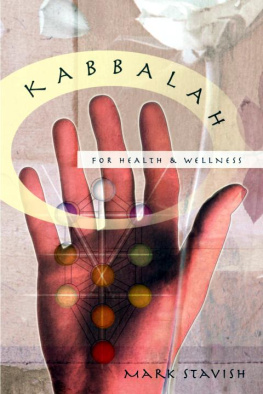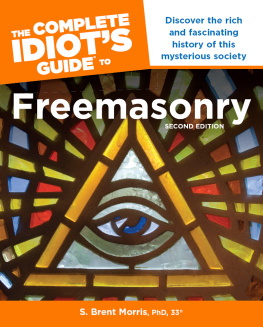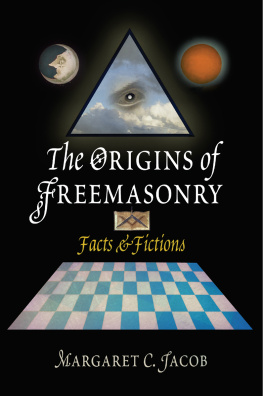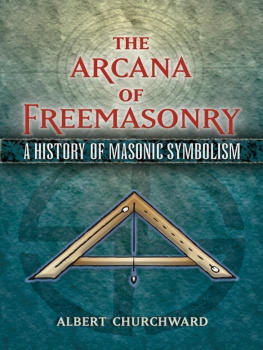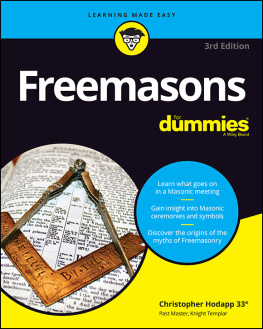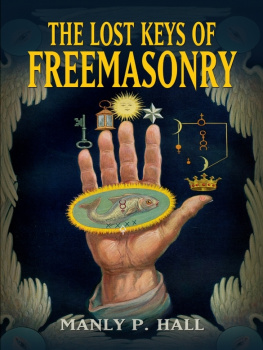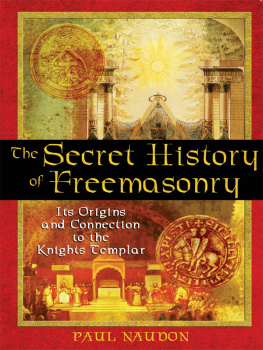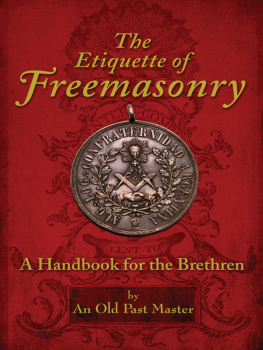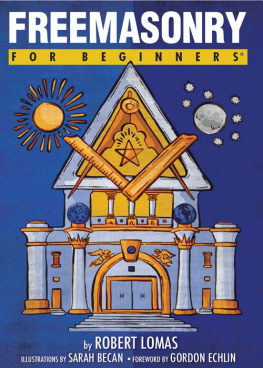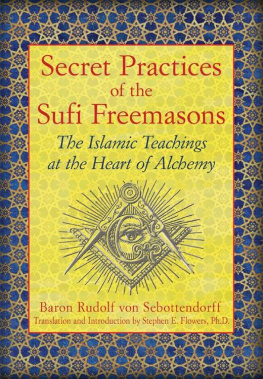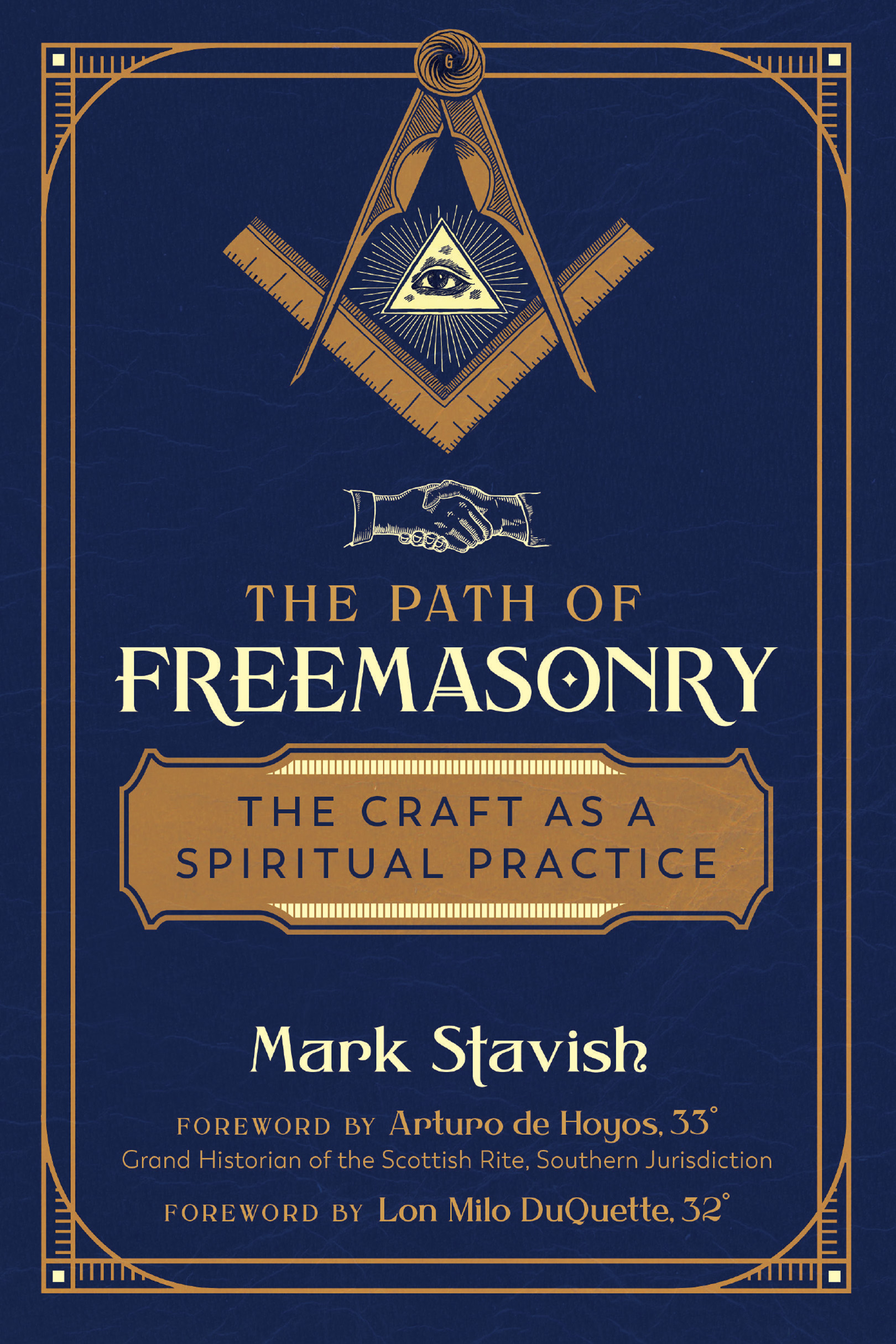This book is dedicated to my wife, Dr. Andrea M. Nerozzi, and our two sons, Luke and Nathaniel. They are the cornerstone upon which all my good works have been built, and the capstone of my life.

THE PATH OF
FREEMASONRY

Like a drowsy lion, Freemasonry arouses in the outsider both curiosity and mistrust. This landmark book anatomizes the creature without apology or mystification. At the same time, it summons insiders to revive their moribund craft in all the grandeur of its original mission to humanity. Mark Stavish, whose work is informed by a profound knowledge of esoteric traditions, has earned gratitude from both sides.
JOSCELYN GODWIN, PROFESSOR OF MUSIC EMERITUS, COLGATE UNIVERSITY AND COAUTHOR OF SYMBOLS IN THE WILDERNESS AND FORBIDDEN FRUITS
Mark Stavishs The Path of Freemasonry provides a comprehensive introduction to the Craftits history, inner structure, beliefs, objectives, rites, and even its symbolically rich language. Unusually, however, it goes far beyond this brief to encompass the broader social and cultural issues surrounding the tradition; and in particular its relationship with, and profound connections to, the occult societies and esoteric currents toward which some of its most respected members have contributed their energy and organizational and ritual know-how. Indeed but for the disciplinary bedrock provided by Freemasonry it is arguable whether there would be a Western esoteric tradition worth talking of. This commendable work provides the reader with an accessible and engaging overview of this subject.
PETER MARK ADAMS, AUTHOR OF THE GAME OF SATURN, MYSTAI, AND THE POWER OF THE HEALING FIELD
Mark Stavish has written a must-read for anyone considering Freemasonry and the esoteric path within it... This book will take you on a journey through its unique history, touching upon rituals, symbolism, and diving into the philosophies of its uncharted beginnings and into the modern era. Get ready for a journey and an exciting read into the worlds most venerable fraternity.
ERIK W. KROGSTAD 33, MASTER MASONIC SCHOLAR, LECTURER, AND BLOGGER
ACKNOWLEDGMENTS
Thank you to Jon Graham, Jeanie Levitan, Patricia Rydle, Albo Sudekum, and the entire staff at Inner Traditions for their support on this project. They are a spectacular group of people to work with and have made a good book much better.
Thank you to Carl Weschcke of Llewellyn Worldwide who published the first edition of this book under the title Freemasonry: Rituals, Symbols, and History of the Secret Society in 2007. May this new and much improved edition be a testament to the wisdom of both these publishers and their staff.

Deeper into the Wonderful Mystery

Foreword to the 2021 Edition
Arturo de Hoyos, 33
FREEMASONRY, THE WORLDS OLDEST and largest fraternity, has been variously described and defined. The organization defines itself as a system of morality, veiled in allegory and illustrated by symbols. Chief among its objects is the pursuit of light, which is analogous to truth or realityor, to use the words of John Locke, the knowledge of things, as they are to be found in themselves, and not our imaginations. Thus, it encourages mature individual and social responsibility through awareness of the world and our place in it. Within the lodge Masons carefully avoid divisive issues, such as politics and religion. Rather, Masonic labor is itself a type of worship that raises humanity by self-improvement (laborare est orare, to work is to pray). Although Masonry acknowledges the existence of a Supreme Being, it leaves sectarian religious beliefs and concerns to the individual, promoting only brotherhood. Thus, it remarkably transcends all borders, artificial and natural, and unites members who may otherwise have remained distant.
Yet the Craft is much more than that. Albert Pike, the famous grand commander of the Scottish Rite, Southern Jurisdiction, stated, Masonry is a march and a struggle toward the Light. For the individual as well as the nation, Light is Virtue, Manliness, Intelligence, Liberty. Tyranny over the soul or body, is darkness. And, in his clearest definition, he proclaimed:
Freemasonry is the subjugation of the Human that is in man by the Divine; the Conquest of the Appetites and Passions by the Moral Sense and the Reason; a continual effort, struggle, and warfare of the Spiritual against the Material and Sensual. That victory, when it has been achieved and secured, and the conqueror may rest upon his shield and wear the well-earned laurels, is the true Holy Empire.
The means by which Freemasonry accomplishes this is through ritual and symbolic instruction. This ancient and time-honored practice has the remarkable ability to bring its initiates into a mythical and symbolic realm where, freed from the thoughts and concerns of the modern world, they gain insights and learn lessons by which they navigate throughout life.
Freemasonry is ancient, and few records survive to give us insight into its original character. The oldest known Masonic document, the Regius Manuscript (ca. 1410), includes the Old Charges or Gothic constitutionsthe laws and moral code of conduct observed by medieval stonemasons. Over 120 ancient documents detailing these principles still survive. What today we call the lodge was originally just the small private dwelling of the masterthe stonemason who held the building contract for a medieval construction project. It was erected near the project, and if a Mason was lucky, he might be invited to enjoy its fellowship. These early Masons were likely read the Old Charges, given a mythical history of their trade, and invested with secret modes of recognition, including special handshakes and passwords. They were religious men, builders of cathedrals, and their stories included tales of the building of the Tower of Babel, Noahs Ark, and, later, King Solomons Temple. Early Masons were also instrumental in rebuilding London after the great fire of 1666. By the 1640s non-Masons were being admitted into Masonic lodges. This marked a move away from Masonry as a purely operative, trade-based fellowship toward speculative, or philosophic Masonry. In 1717 several lodges met and formed a grand lodge in England, which act is often considered the beginning of Freemasonry as a fraternity. The Old Charges were collated and published as The Constitutions of the Free-Masons (1723), wherein we read that Adam was the first Mason, and that the Garden of Eden was his lodge. This work, the first official Masonic book, continues to influence the laws of all regular grand lodges in the world today.
The earliest accounts of Masonic ritual are found in the Edinburgh Register House Manuscript (1696), though it leaves much unstated. Its descriptions of rituals are mostly abbreviated, with little explanation as to what the particular actions actually meant. Yet we know that there were secrets to be learned from the rituals. The Dumfries No. 4 Manuscript (1710) declares that no lodge or corum of massons shall give the Royal secret to any suddently but upon great deliberation first let him learn his Questions by heart then his symbals then do as the lodge thinks fit. Theres a good deal of debate and speculation among modern Masonic scholars about where some of these practices and symbols came from. Freemasonry has always been eclectic, borrowing what it needed to create and improve its ceremonies, rituals, and instruction. Because members were forbidden from transcribing the rituals and betraying their secrets, we have precious few descriptions apart from early anti-Masonic tracts and published exposs revealing Masonic rituals. Some of these include enigmatic statements. For example,



